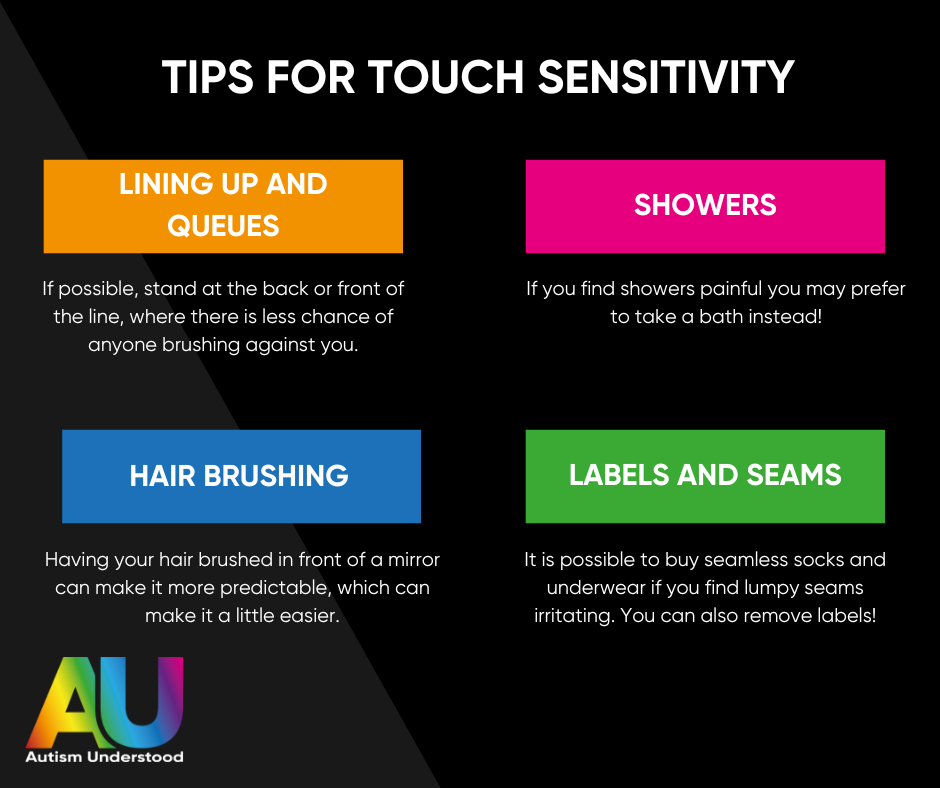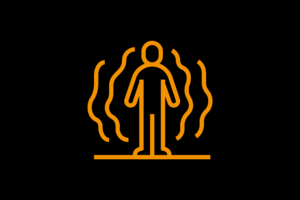Autistic people often experience lower sensitivity OR higher sensitivity with touch. It is common for the levels of sensitivity to change according to how relaxed, stressed or tired the person is feeling.
The scientific name for our sense of touch is the Tactile System.
Our bodies are covered with tiny receptors which send messages to the brain when we touch something, so we can work out what the object is. The sense of touch helps our brain understand different textures, temperatures and pain.
Lower sensitivity
Young children are often taught the phrases ‘Look don’t touch’ or ‘You look with your eyes’ when grown-ups take them into shops – especially shops with expensive breakable items on the shelves! However, someone with lower sensitivity to touch often can’t resist touching everything, and may not always notice if they knock into something.
Lower sensitivity can have some advantages; autistic people sometimes don’t feel physical pain as much as the majority, and might not be bothered if they fall over or bump into something. And being less sensitive to temperature means it doesn’t matter if the weather forecast is wrong and you go out wearing a jumper on a warm day, or don’t have your coat with you on a day when it suddenly turns chilly outside.
Higher sensitivity
Those who are more sensitive to touch can have a strong dislike of things that may seem quite ordinary to the majority of people. This is not a case of autistic people just being fussy or grumpy, but their sense of touch sending stronger messages to the brain.
Here are some examples of common difficulties:
Crowds/queues – in these situations where people are close together, it is possible for someone to accidentally touch or brush your skin. For someone with higher sensitivity, this sort of ‘light touch’ can feel painful and upsetting.
TOP TIP – If you are asked to ‘line up’ somewhere with a group of people, it can be a good idea to stand at the back or front of the line, where there is less chance of anyone brushing against you.
Showers – to some people, the pitter, patter of water from a shower can feel painful, like thousands of tiny needles.
TOP TIP – Often those who are more sensitive to touch prefer to take a bath than a shower.
Hair Brushing – this can be upsetting to people who feel their hair being tugged more strongly than others. It is quite common for autistic people to prefer to have shorter, more manageable hairstyles. But it is also common for people to have long hair, as getting it cut can be really difficult.
TOP TIP – having your hair brushed in front of a mirror can make it more predictable, which could make it a little easier.
Labels and seams in clothes – a small tag in a t-shirt, or the seam of a sock can feel much larger and rougher on the skin to a person with higher sensitivity to touch. Lots of shops now print the information onto the inside of clothes, which makes wearing them more comfortable than when there is a label/tag attached.
TOP TIP – It is possible to buy seamless socks and underwear if you are irritated by lumpy seams in your clothing. You can also remove labels!




